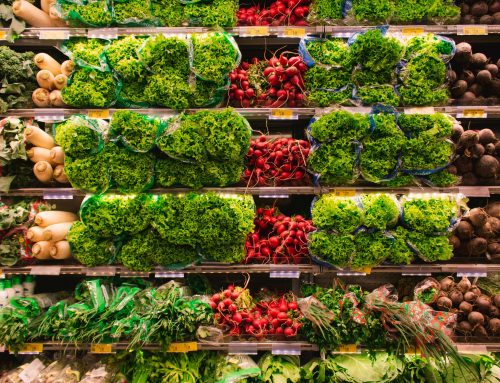 There is an urgent need to address inequities in the current food system with evidence-based community food policies that ensure and protect peoples’ access to healthy, nutritious and culturally appropriate food.
There is an urgent need to address inequities in the current food system with evidence-based community food policies that ensure and protect peoples’ access to healthy, nutritious and culturally appropriate food.
The controversial SBS program Struggle Street, screened on Wednesday May 6, is a window into the lives of suburban residents in Sydney, now one of the most expensive cities in the world. In the food desert where the program is set major thoroughfares are festooned with the livery of McDonalds’, Hungry Jacks and KFC. A take-away sandwich or pre-made salad at the local service station is considered a treat; Coca-Cola and calorie-laden energy drinks are meal substitutes for children, teens and adults alike. Curried sausages top the menu choices at home.
Evidence of these poor diets is stark, ranging from malnutrition to obesity, Type 2 diabetes and cardiovascular disease.
For the cast of Struggle Street and many other city dwellers access to fresh, healthy and affordable food – and especially fresh fruit and vegetables – is limited. Low-income residents stranded in food deserts have limited access to the transportation needed to perform household provisioning tasks such as grocery shopping. The small in-city grocers that improved neighbourhoods in low- to moderate-income housing areas have all but disappeared at the expense of a profit-driven supermarket duopoly.
Food insecurity is a daily challenge for families trying to survive on limited means, leading to increasing reliance on food charities.
According to last year’s Food Bank Hunger Report 516,000 Australians rely on food relief per month.
Thirty-five per cent of clients are children. Up to 60,000 people are turned away from the 2,500 charities that struggle to support them. Sixty per cent more food is needed to meet demand.
We are not alone. One in seven Americans now relies on a food bank and there are 1,000 operating in Germany. Feeding Britain (2014), a parliamentary inquiry into hunger in the UK, attributes the new ‘food bank movement’ to the inability of citizens to meet increasing costs of food, housing and utilities that outstrip growth in wages. Further, people lack the budgeting skills that might help them get by with less.
In Sydney, as in many other cities, social enterprises are doing their best to fill the gaps in food provisioning that governments do not. Food rescue charity Oz Harvest turns thousands of kilograms of waste food into meals for the most vulnerable everyday. The Wayside Chapel in Kings’ Cross has been feeding the lonely and destitute since 1964. The Chapel café provides a safe, relaxed environment for patrons to enjoy the dignity and sociability of purchasing and sharing a cheap meal. This sentiment also underpins the mission of Lentil as Anything, a non-profit restaurant chain in Melbourne and Sydney where customers pay what they can afford for a multicultural, communal dining experience that welcomes workers, refugees and the long-term unemployed.
These initiatives and a range of other urban food projects provide residents with food security, education, health and social benefits. Many are threatened by urban sprawl and rezoning of agricultural land; others struggle to continue due to lack of funding and reliance on volunteer labour. Research into their significant and genuine contribution to strengthening community food systems is needed.
Though comprehensive studies of food production on the peri-urban fringe of Sydney and farming in the Sydney Basin have been conducted there is a lack of data on urban food production and gaps in land use data for the City of Sydney. There is little information about who participates in local food networks and community gardens, and no measurement of quantities of produce. Few local councils have food policies, the exceptions being the Blue Mountains, Fairfield, Hawkesbury, the Illawarra region and Penrith.
In the City’s Strategic Vision for a Sustainable Sydney 2030 food systems are conspicuously absent.
Community food plans must take a whole-of-systems approach in mapping agricultural activities through developing a framework that enables us to understand and measure how these activities combine in ‘food flows’ that contribute health, social, economic and ecological benefits to residents of the city. Successful models include Ontario’s Local Food Act (2013), New York City’s Five Borough Farm Project (2012) and the City of Melbourne Food Policy, the planning of which began in 2011.
Projects with long-term vision to strengthen community food systems must measure the macronutrient content of these food flows, and determine how better access can be provided to city dwellers, and particularly the socio-economically marginalised. The formation of this policy must be systems-based, community-led and co-created to succeed.
Because hidden hunger is a public problem for which we are all responsible.
This post was originally published on the University of Sydney Environment Institute’s ‘Food, People and the Planet‘ web site.

